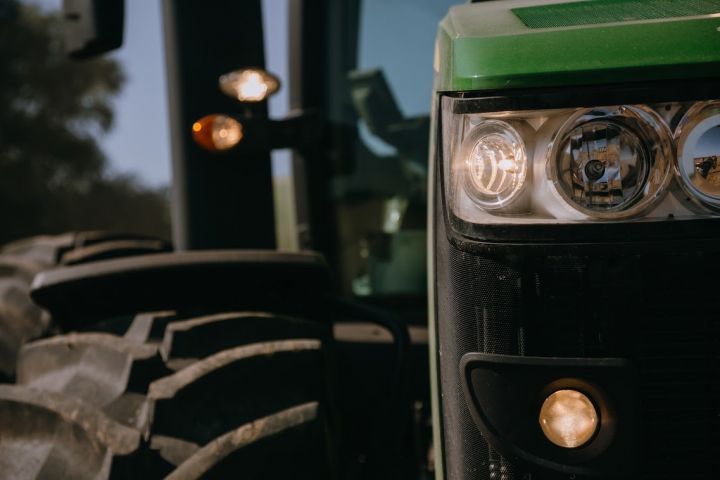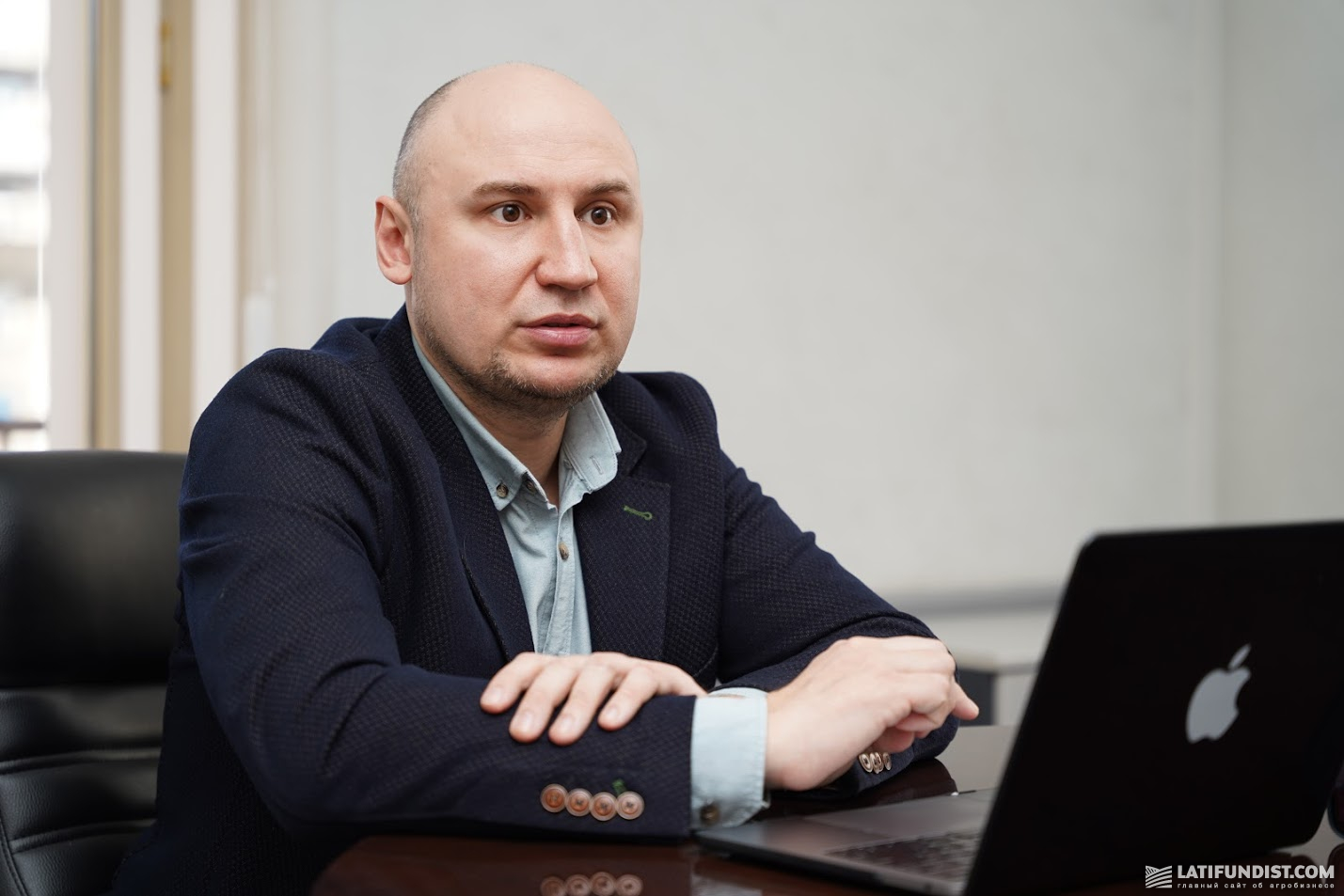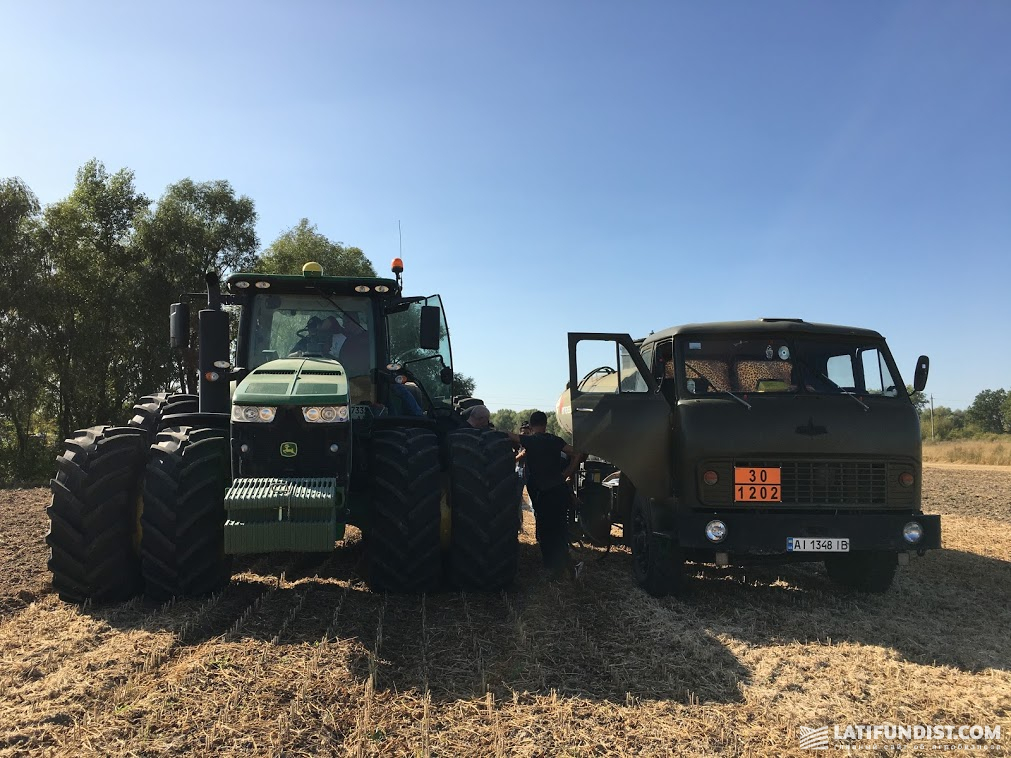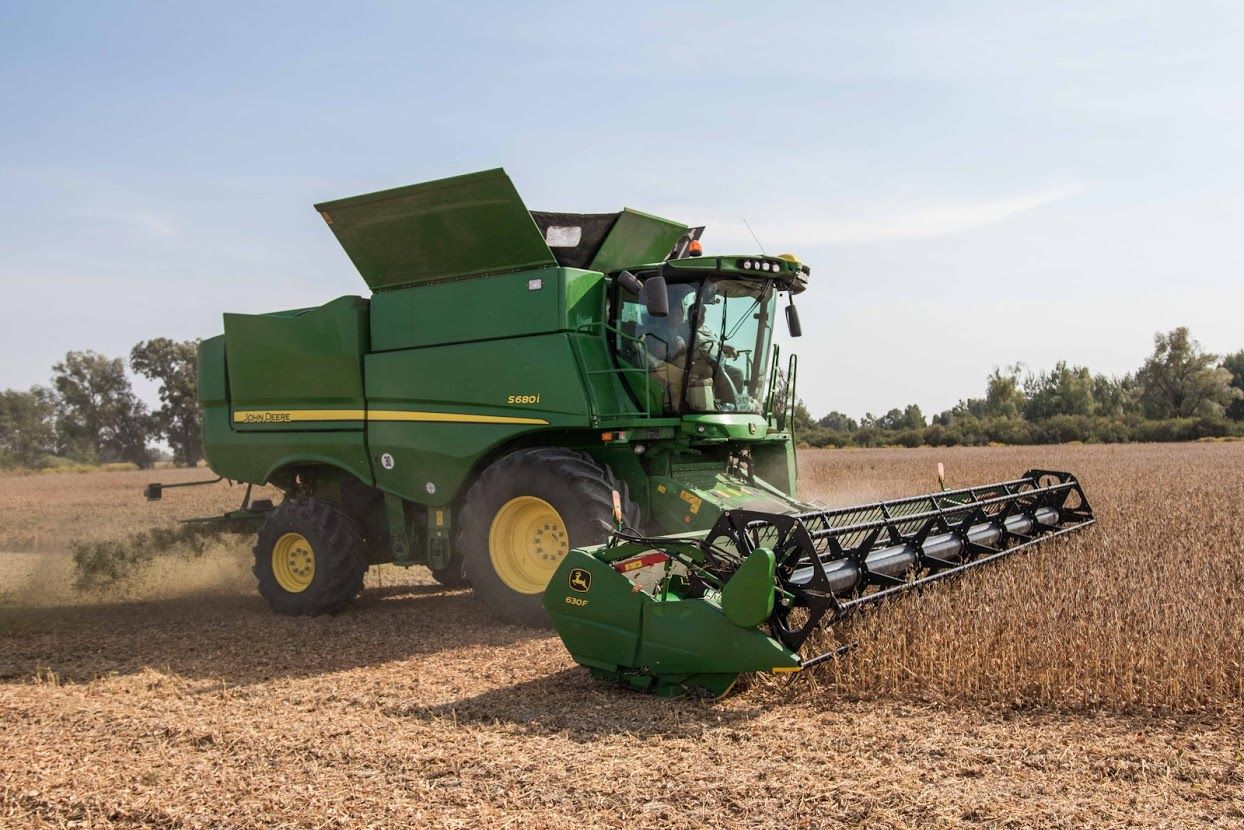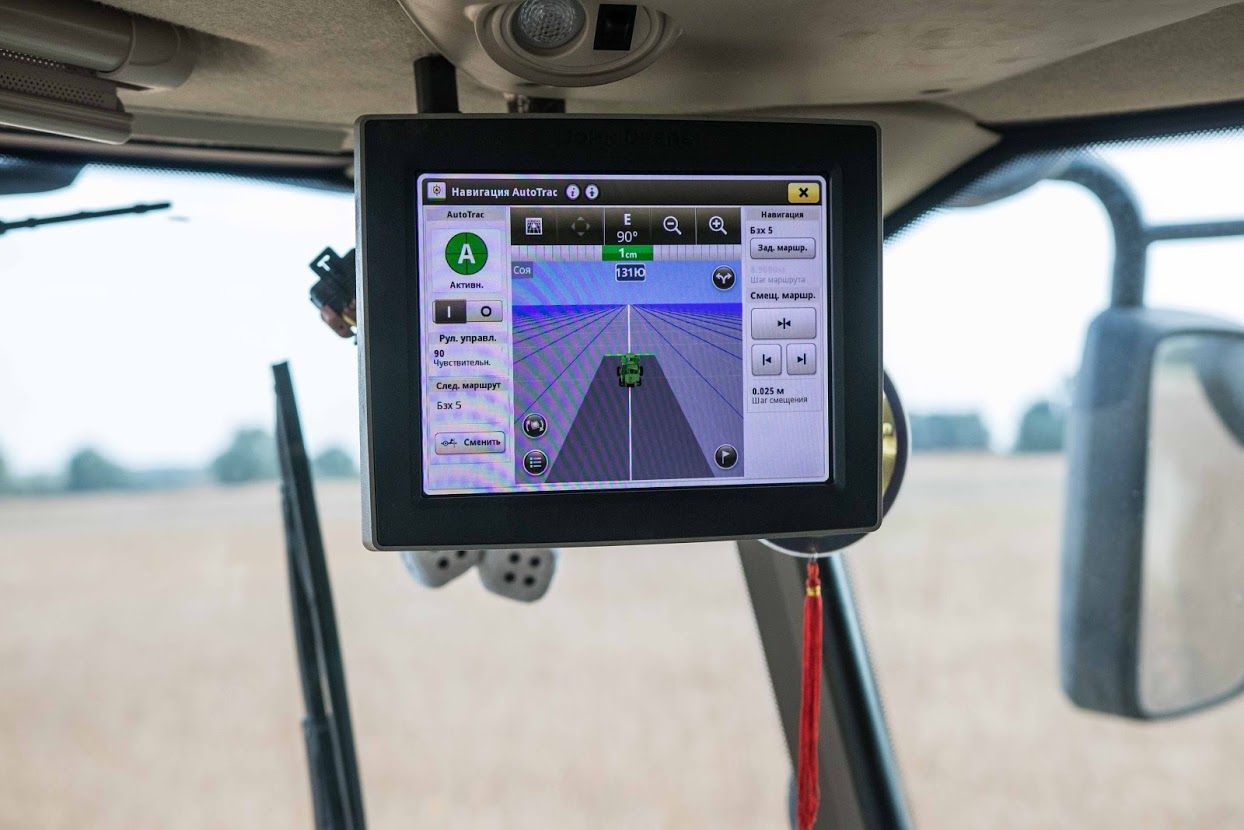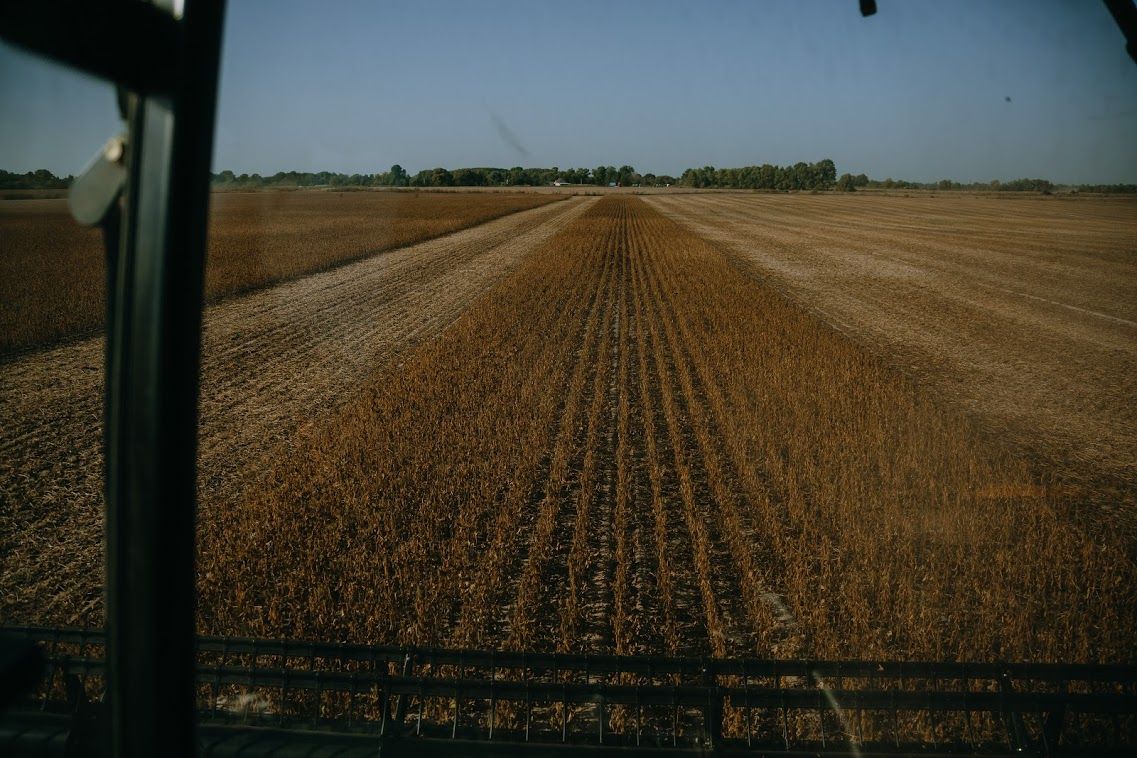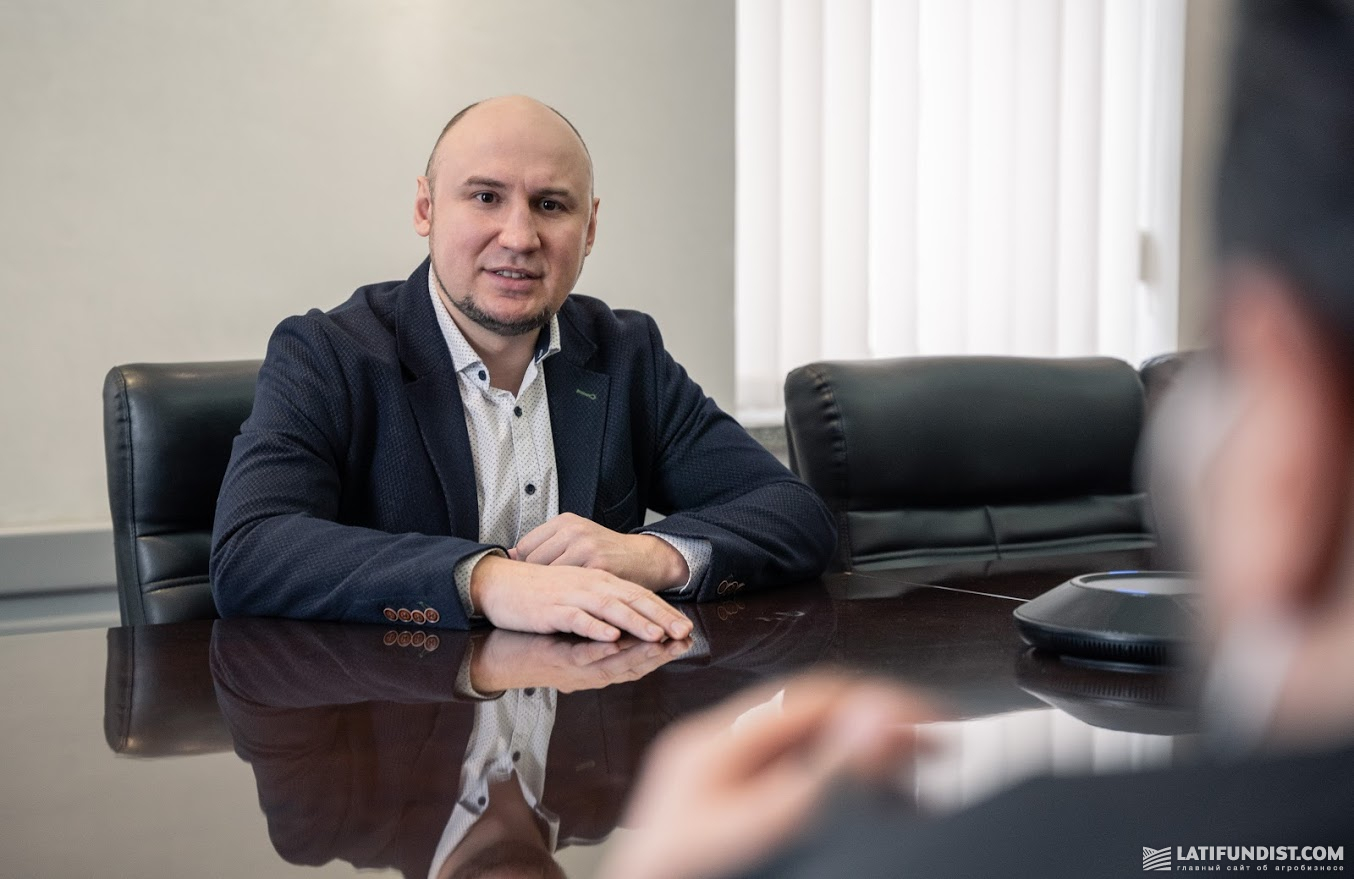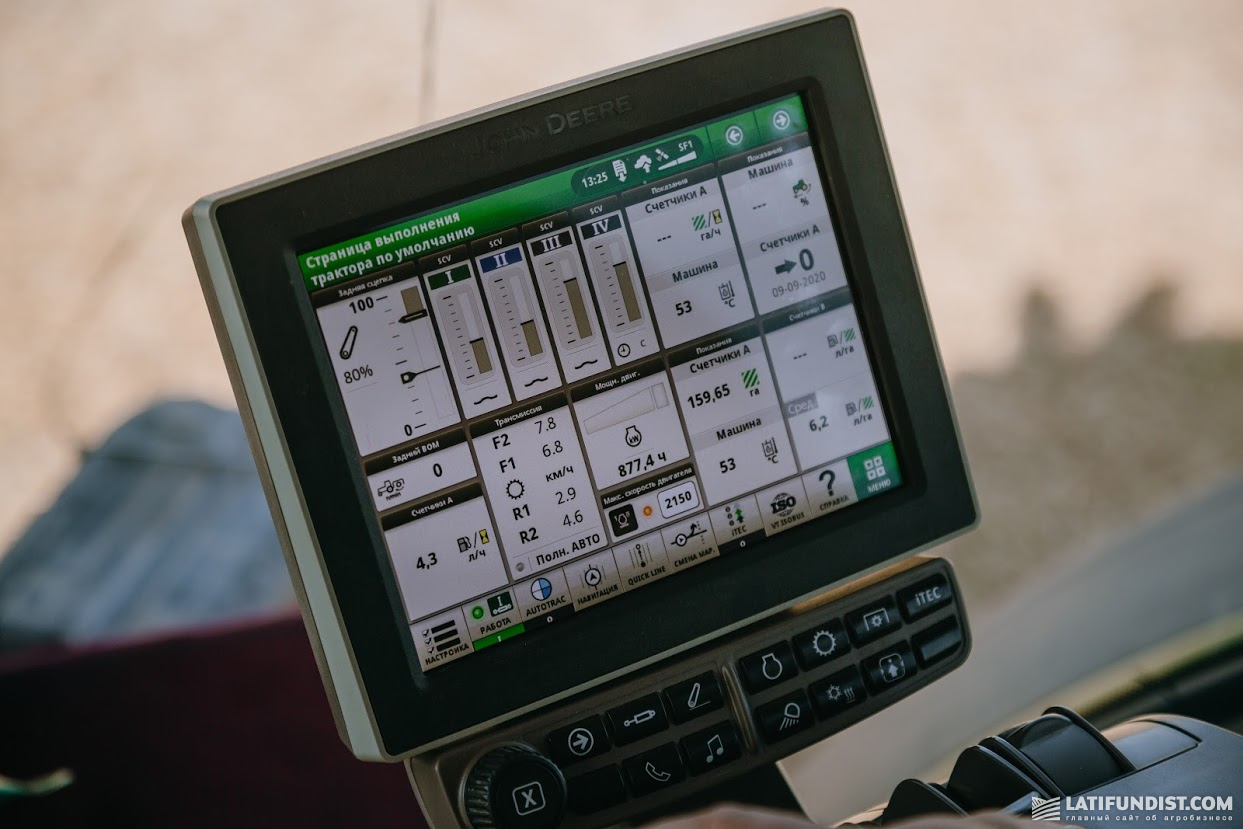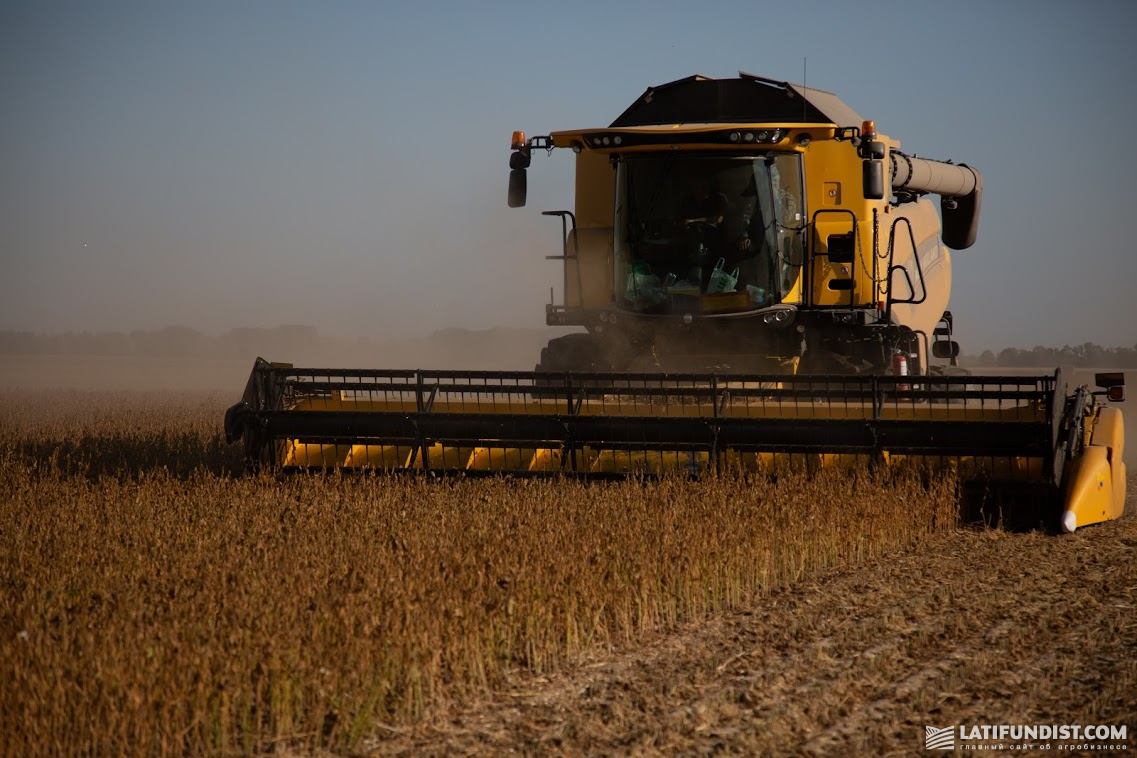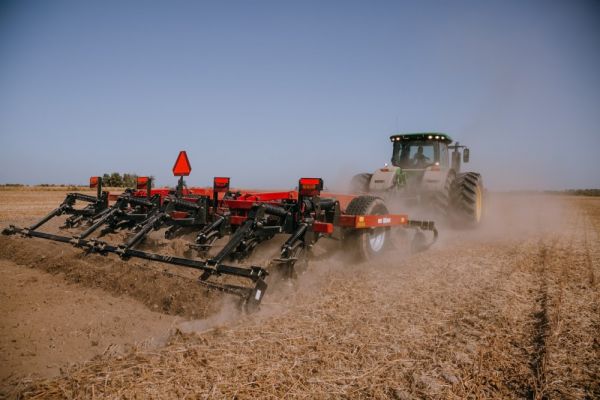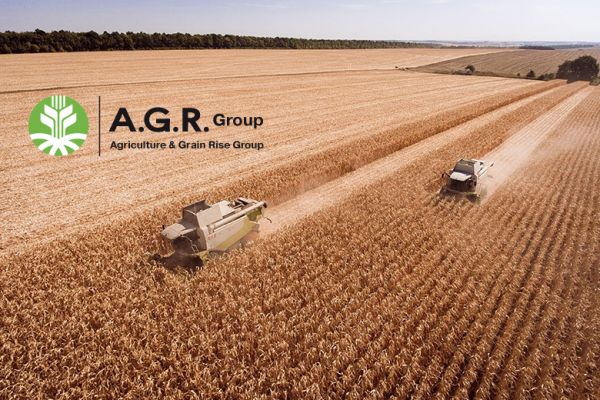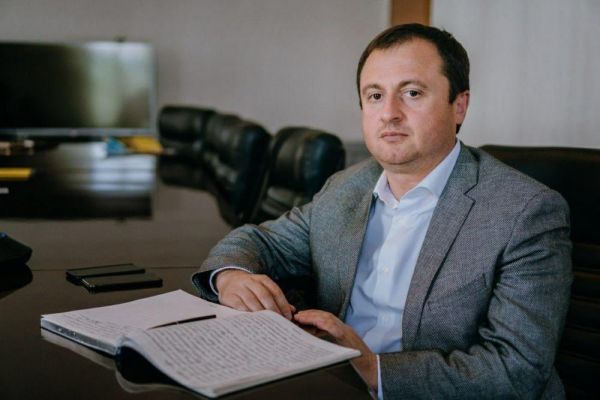A.G.R. Group Innovation. Why an Agricultural Holding Invests in Machinery Priced Higher Than a Ferrari
Field scouting by drones, parallel driving, forming task maps for differentiated seeding by yield maps and vegetation indices, automatic monitoring of all operations in the field and machinery idling — all this is used in Misak Khidiryan's A.G.R. Group agricultural holding.
A few years ago, the company set out to automate production and introduce precision farming. How this process evolved, what challenges the team faced, how much they had to invest in machinery and equipment, and whether it was worth the effort and the time invested in achieving the goal. We ask all these questions to A.G.R. Group Board member in charge of IT Ihor Bohdanov.
Latifundist.com: Why innovation? Have you always dreamed of working in this field?
Ihor Bohdanov: Physics and Mathematics have been my thing since childhood. I love precision and clarity, solving non-standard problems. And the more challenging they are, the more interesting it is for me. Consequently, it became the priority in choosing the university. I chose the National Aviation University, which combines both discipline and my favourite subjects. I completed my master's degree there and got a degree in computer engineering. But that didn't feel enough to me. A year after graduation, I re-enrolled and successfully completed a second degree in Finance and Audit. Now process automation and innovation, backed up by calculations, is what I do with pleasure.
Latifundist.com: What did you do before you joined A.G.R. Group?
Ihor Bohdanov: I started my career in banking, where I worked between 2004 and 2017. I was involved in the automation of the banking day. I started out as an ordinary specialist and ended up as the Director for Information Technology and Advisor to the Chairman of the Board.
I find it more stimulating to do my job when I am challenged, so in 2018 I decided to change jobs and join the A.G.R. Group as a chief innovation officer. My role was to automate all production processes, build and maintain the entire IT infrastructure of the agricultural holding.
Latifundist.com: When you started in agroholding, what difficulties did you face? Who helped you in the beginning?
Ihor Bohdanov: At that time there were four different clusters in the agricultural holding, in fact, four different enterprises. There was no centralization. They were separate farms that lived independently and were managed manually.
But much in the way of automating production processes had been done before me. And in this much credit goes to the head of the information systems support department, Serhiy Mykolayovych Piven. He was the founder of everything that was done in the holding in terms of automation. And, in fact, he was responsible for all further support and the introduction of automation in the agricultural sector.
My first steps were to centralize the entire network infrastructure, centralize and form the server base, back-up systems, build security systems, establish corporate communications and means for communication. That is, the things that are related to building the IT infrastructure. And after that, I started to delve more into agro issues.
What were the challenges? There was interest. There was plenty of diverse information content which I was not familiar with before. Everything concerning automation of the accounting system and finances — I was well versed in that. But the automation of production processes was new to me. But thanks to the support of Serhiy Mykolayovych there were no particular problems. He got me very involved in the process. There was no turning back.
Latifundist.com: What is the Ukrainian innovation market like? Where does A.G.R. Group find itself in it?
Ihor Bohdanov: First of all, the agricultural sector is the most innovative in Ukraine. And everything that can be automated is precisely the first to happen in agribusiness and is being automated in the first place. Secondly, the innovations market is very developed. All the innovations we receive from different vendors (manufacturers of equipment and navigation) are implemented for the first time mostly, Ukraine is always in step with innovations in the agricultural sector. Vendors are testing and trying out much in our country. We have everything for this: the land, the desire, the level of equipment and qualified progressive specialists.
Where is A.G.R. Group? At the moment we are using almost all the available functionality of the machinery we have. Perhaps we are lagging behind some agricultural companies because we do not yet have a set of analytical data, we have not accumulated our own baggage to work with. But we are on our way to it. So, at least the above-average level, in my opinion, has been overcome.
The agricultural market is highly competitive. We have to fight for higher yields and, at the same time, for lower costs. And it is technology in precision agriculture that produces these results: minimizing crop damage and trampling, reducing the cost of seed, crop protection products, fuel and lubricants, and, most importantly, saving the precious resource agriproducers — time.
Latifundist.com: Let's focus on the automation of production processes. The company uses a system to monitor and control machinery. What is the system all about?
Ihor Bohdanov: We use the Agrocontrol platform, which registers absolutely all operations in our fields. In other words, we can see in real time how machinery moves across the field, what operations it is used in. All this is monitored by the operator in the control center and the automatic monitoring system. The latter according to the adjusted indicators (speed, idle time, temperature, wind speed, etc.) sends notifications for the dispatchers to react and take necessary measures. The platform also transmits data from fuel level sensors and the CAN-Bus (to prevent theft of fuel and lubricants).
Late last year, we started reading accurate signals from the CAN-Bus (from the antennas of tractors and sprayers) and transmitting them to the system via a tracker. From my point of view, this is very important when completing an agricultural operation, because at this point wages are accrued, fuel is written off according to the norm or the CAN-Bus, and the quality of agricultural operations is checked. When the signal is as accurate as possible, we can calculate the work done to an accuracy of 0.1 ha, whereas a conventional tracker has a significant margin of error.
We also use Bluetooth tagging to identify trailed equipment. The tractor is equipped with a receiver for this purpose. When the tractor approaches the trailed aggregate, the receiver, which is on the rear of the frame, identifies the ID tag that is on the front of the trailed aggregate, and it is recorded in the Agrocontrol system. This means that the system automatically knows which type of operation is being carried out in the field. Then the data is synchronized between Agrocontrol and 1C, and we get the full information about the vehicle, its tank, the technological operation, the area covered, fuel consumption, etc. All this information goes into the route sheet in 1C.
Latifundist.com: How is the quality of the agricultural operation monitored, idle time minimized?
Ihor Bohdanov: The monitoring system is also used for this purpose. If, for example, tillage is to be carried out at a speed of 8 km/h, but this speed is exceeded during work, the system automatically records this and sends a notification to the telegram bot, to an email, and to the dispatcher's screen in the Agrocontrol web version. The dispatcher passes this information on to the field agronomist. He then stops the operation or warns the tractor driver.
In practice, these situations occur in the beginning. Soon the machine operators realize that they are being constantly monitored and that they have to follow the set working rules.
As regards minimizing machine downtime, the system reads the voltage from the CAN-Bus. If, for example, a tractor stands idle for 15 min., the system is automatically notified and we figure out why it is idle and not working.
We have to ensure that the amount of downtime is reduced to a minimum because every minute in the agricultural sector is paid for. If you don't do it, more will be done by hired machinery, which you will pay for. So the company bears the cost of depreciation of its machinery and the cost of hired machinery.
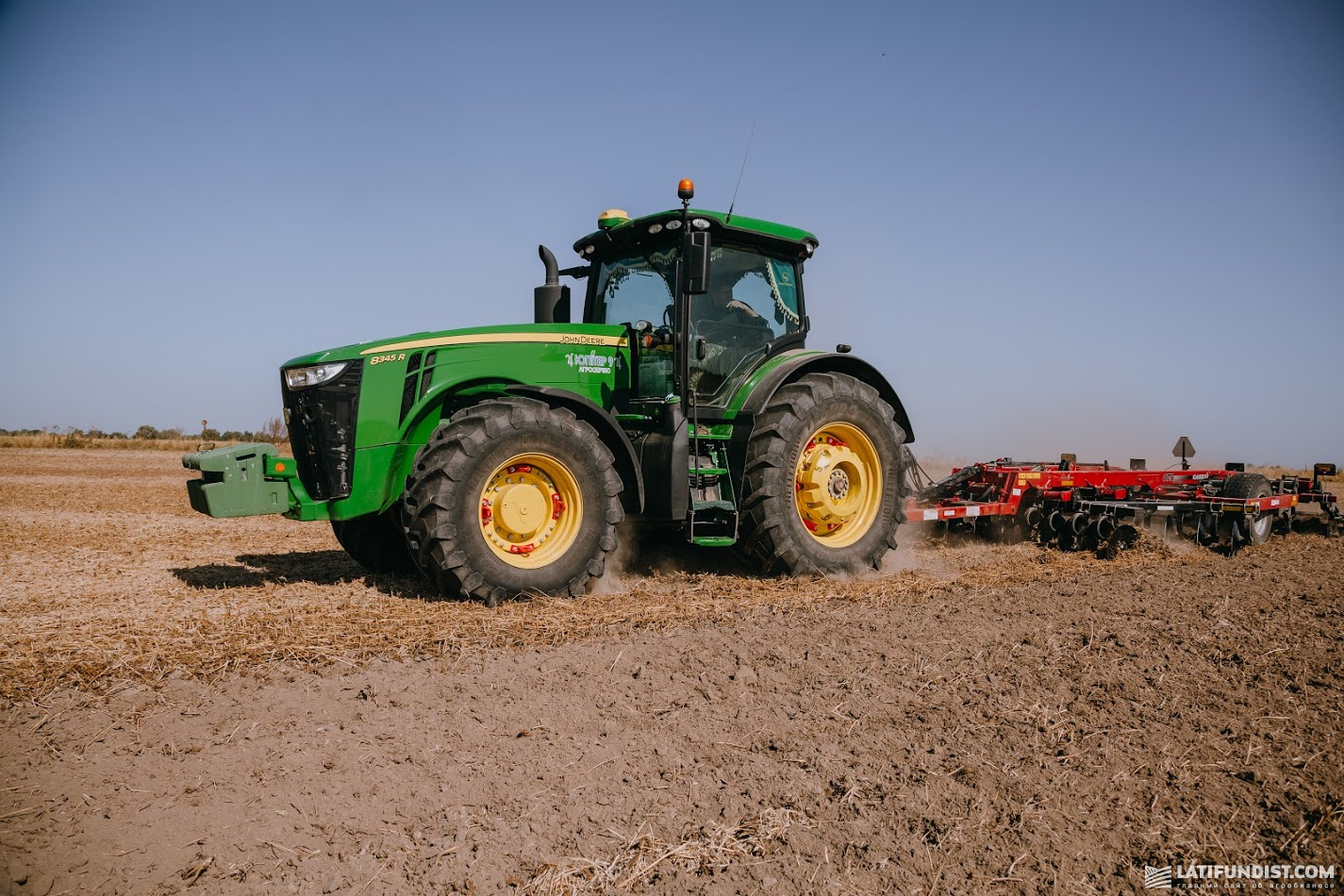
Latifundist.com: How are weighing stations automated? We know that the Brovary cluster is already using such a system.
Ihor Bohdanov: Yes, it is introduced in all of the holding's clusters, each vehicle is assigned an individual RFID card, using which the driver receives products in the field from the harvester and identifies himself at the weighing station. When weighing, the data is automatically transferred to the Agrocontrol system with the subsequent transfer to the 1C accounting system, and the goods are accounted for automatically. This way, we always know how much, from which field, and by which transport the crop was delivered.
Latifundist.com: When did you decide to automate the filling stations? How was this process conducted?
Ihor Bohdanov: The automation of filling stations was carried out last year. On the legislative level, agricultural producers were obliged to obtain a licence by 1 March 2020 to store the fuel for their own use.
We got this licence, but we came to the conclusion that we can't do without automation in this matter. For example, we have 4 tanks in the cluster, all belonging to different companies in the cluster, and there are two fuel dispensers. We were faced with a dilemma: buy two more dispensers or carry out automation. Then, together with the company Agrocontrol we included each barrel in the system, put a card reader, equipped the taps with RFID, magnets, so the system always knows which tank is feeding fuel based on each tap's position (open or closed). The fuel dispenser was activated only when one tap was open and the driver's magnetic card was identified. If two taps are turned on, the dispenser will not be activated. In this way, we identified which tank was used for refueling, which vehicle, by which driver's card.
All information from filling stations is automatically transferred to Agrocontrol, and then to 1C. For each tank, we receive balances promptly and can provide accurate data in the event of a tax audit.
At first glance, such a project seems easy to implement. In fact, it turned out to be quite difficult. And here I would like to mention the responsiveness of our technology partner, Agrocontrol. Thanks to them we are able to implement all our plans quickly enough. And much of what has been done in Agrocontrol has been implemented at our request, with the participation of our employees and our specialists.
Latifundist.com: What about tender procurement? How is it automated in agroholding?
Ihor Bohdanov: Agroholding acquired the APS SMART tender platform. Now all large purchases (over UAH 100,000) undergo a mandatory tender procedure. We even purchase equipment through this platform. There is an additional negotiation process for the purchase of equipment, which involves at least 2 members of the Board so that it would be fully transparent and open. We also implemented full integration with 1C for the tender platform.
I consider this to be a major achievement of the past year.
Latifundist.com: How is land bank control automated?
Ihor Bohdanov: For this, we use Agrocontrol and SAS Planet, mapping and navigation programs. This year we introduced a new position of GIS-analyst, handling exclusively land bank and land issues. He does not deal with land share owners. He only works with software resources.
We use 100% of Agrocontrol's land bank module. Around 70% of the improvements made last year to the land bank module were based on our own specification of the tasks. Many thanks again to the Agrocontrol team who successfully completed this task.
In Agrocontrol we can analyze our own fields and those of our competitors. We can view the history of a field, generate a report on it and collect analytics. Agrocontrol is also compatible with various land-use accounting systems. We can process an extract from the state property register, upload it to Agrocontrol, and analyze the land plots of one enterprise or another. We can also conduct a cross-check on our own enterprise from the same register. It is possible to monitor and analyze land plots that are outside of our fields to decide whether it is appropriate to use them in the structure of new fields or to exchange them. We have implemented data synchronization between Agrocontrol and 1C to transfer information about land plots (valid lease agreements) from 1C to Agrocontrol.
In terms of the land bank, a lot of improvements were made (including on exchanges) in 2020. I believe that all exchanges should be displayed in the system so that you can understand how much and what land you have given away, how much and what land you have taken. The block for keeping records of exchanges is one of the important elements of the land bank. In Agrocontrol, this block allows you to combine both graphic and table data from exchange agreements and display everything in a chart.
Latifundist.com: Was it you who initiated the introduction of precision farming in the agroholding?
Ihor Bohdanov: Agronomists were the first to start talking about it. We invited Serhiy Khablak, an agronomy analyst, Ph.D. in Biological Sciences, to join the team. We talked a lot with colleagues from other agricultural companies who had already switched to the precision farming system so that we knew what stages they had gone through and what results they had eventually obtained. There was no one in the team at the time who had practical experience in this field. Therefore, as someone who was interested in automating the production process in the field, I took the initiative to take on the precision farming project and implement it.
Two precision farming engineers were recruited for this purpose. One knew the theory well, put it into practice with us. Another had good practical experience with John Deere and Case machinery. That's how the three of us, with the support of our team, started to implement precision farming. And, of course, a great contribution was made by our colleagues who had already come this way. In fact, 2019 was the preparatory phase, and we introduced precision farming, well, precision driving as I call it, as early as 2020.
Latifundist.com: What precision farming systems has the company implemented so far?
Ihor Bohdanov: We use drones for scouting. We estimate the condition of plants using NDVI maps and vegetation indices and send drones to problem areas for taking photographs. This year, we want to try applying crop protection products with drones in the test field. Yes, it is not quite practical since drones are equipped with small tanks, thus it will be laborious to carry out such an agricultural operation in large areas. But perhaps in the future companies will tackle this issue and whole drone bee families will appear.
We operate John Deere tractors with the manufacturer's navigation, Berthoud sprayers with Trimble subscription products. Last season, the machinery in Hrebinka and Brovary clusters, where we introduced precision driving, was unlocked for precision paid satellite signals. For Trimble, it is CenterPoint RTX, and for John Deere, it is StarFire 3.
This season, all John Deere machinery will be unlocked to RTK level. Also as part of this project, Frendt will install two RTK base stations in Chernihiv and Poltava regions at our cluster bases free of charge.
Speaking of investment in signals, last year we spent UAH 1 mln on them and unlocks in two clusters. But I believe that this is an insignificant expenditure, considering that all unlocking is transferred from antenna to antenna, from tractor to tractor in John Deere machinery. In other words, it is an already purchased asset that we put in our piggy bank and will not invest in it further. This year we purchased subscriptions for four clusters and unlocked them. All this cost another EUR 120 thou.
Seeders feature sectional or ordinal coulter switches, and sprayers have autopilots and sectional switches. Last year we bought two new John Deere M-series sprayers and this year we bought one of premium R-series, which will run on RTK-signal track to track. Kinze 3600 seeder has an electric motor on the coulters as well. And this year we have purchased three more Kinze 3605 planters.
Latifundist.com: Based on your experience, when is it better to buy precision farming machinery and when to use hired?
Ihor Bohdanov: Buying equipment with a payback period of 10 years is pointless. We calculated that if we buy a combine harvester for late crops (soybeans, corn), its payback period will be 11 years provided it covers 800 ha per year. There is no point in such an investment. And if you take a sprayer, which will do 6 treatments of soybeans and 3 of corn while working 10 thou. ha a year, its payback period will be 3-4 years.
Of course, tractors and tillage equipment can be replaced by leasing. But it will cost more because you can't always get the machines you'd like. Our holding is fully supplied with Ecolo-Tiger disc rippers. This machine enables us to perform two operations at once: both deep tillage and disс harrowing. If we had hired a machine, we would have paid for two operations, but the payback period for Ecolo-Tiger is 18 months.
It is the same for the Case IH True-Tandem vertical tillage machine for preserving moisture in pre-sowing preparation — it paid off in 18 months. But as long as you have your own tractors. Tractors are essential. Sowing is a critical operation in agriculture. Therefore, the farm must have its own seeders and tractors for them. This is the minimum set which the cluster must be provided with. And it is better to form a mono-brand so that it would be easier to service the equipment so that there would be unified navigation and interchangeable spare parts.
Our position on machinery is simple — buy and use your own units only if they have a proper operating time and a payback period of up to 5 years. The rest is hired machinery.
Latifundist.com: Is the quality implementation of precision farming ever dependent on the purchase of new machinery? Or is it still possible to upgrade one that has been in the field for years?
Ihor Bohdanov: Anything can be upgraded. It is just the condition of the equipment that matters. For example, to re-equip a basic Kinze 3600 seeder with interplant to electric motors will cost about USD 100 thou., while a new one costs USD 230-250 thou. It takes to analyze each machine. If the seeder is sound, works on even surfaces, is not welded, and all components are functional, then it is worthwhile to carry out this conversion.
As for the sprayers, there is no point in re-equipping anything there. They almost always come with section switches. You need an appropriate unlock on the monitor, the section switch on overlaps will already be there. If an upgrade is required for various process needs in the field, then yes, it has to be done. It is anyway cheaper than buying a new sprayer.
About tractors. If you take John Deere tractors, all the pre-preparation is there. The only thing you need is unlocking, which in terms of percentage of machinery cost is 2-3%.
Not all harvesters feature pre-preparation. John Deere does. So if the company has a mono-brand – there are John Deere tractors and a sprayer – you only need to change the antenna and monitor. Everything else is already there. If we talk about other brands, additional investments are required. We have not made such.
Latifundist.com: What are the company's plans for this year?
Ihor Bohdanov: The main task for this year is to minimize costs and increase the company's profit through the use of innovative technologies, to introduce precision driving in all clusters on prepared routes, and to create demonstrative fields with differentiated seeding. The task is quite complex since the continuous training has to be conducted in all clusters, and engineers have to be constantly present in the fields and participate in all operations. And everything unknown is at first met with opposition. There are plans to automate a number of processes, but I'd rather talk about them once the job is done.
Latifundist.com: Do you have a special team to train people, to travel around the clusters? Is there a department of some kind?
Ihor Bohdanov: We have a precision farming department with three engineers. We constantly train production staff (agronomists, machine operators and engineers). For purchased machinery, training is provided by manufacturers and dealers of these companies. This is included in the contract. But 90% of efficiency depends not on theory, but on practice. Plus we have a 24/7 support hotline with precision farming engineers to deal with navigating, carrying out and documenting all agricultural operations.
The team should be given as much attention as possible. I have heard several times that people consider themselves trained enough to ask for a raise otherwise they will quit. In other words, the team understands that in addition to money, we also give them a technical base and improve their qualifications. And then our task is to build the system of motivation in such a way that the employees who have learned much and carry out agricultural operations effectively, stay in the company.
Latifundist.com: Further to the company's plans. . .
Ihor Bohdanov: The second task we set ourselves is to work exclusively with John Deere equipment on RTK signals and not on satellites.
The third is the elimination of overlaps in tillage or application of crop protection products, in other words, the reduction of the tillage area. The fourth is precision sowing and adjustment of seeders to ensure that row and inter-row spacing are always the same.
In the elements of precision farming systems, these are accurate signals, a ready-to-use navigation system, autopilot, no overlapping, joint tillage and harvesting. In seeding, again, it is signals, navigation, mapping and section switching that are important.
For spraying, it's the same, only with the addition of section switches and track-to-track to minimize trampling and damage to plants. In harvesting, I can only mention the plans for the accurate signal so far.
Latifundist.com: Do you ever regret leaving banking for agribusiness?
Ihor Bohdanov: I have not regretted it one bit. On the contrary, I like what I do. I have always loved automating processes, and in this case, you not only press buttons, but also work with your hands: to solder, develop something, then implement it and see how it works in the field or at the base.
It is machinery. I mean, what man doesn't love cars? And there's machinery here worth as much as a Ferrari or more. And there's probably no higher level. There used to be tractor drivers, now there are machine operators. They work with expensive machinery, which is powered by artificial intelligence. That's pretty cool. And teaching them and introducing new things is our main task. This is what keeps me passionate about it.
Natalia Rodak, Latifundist.com

